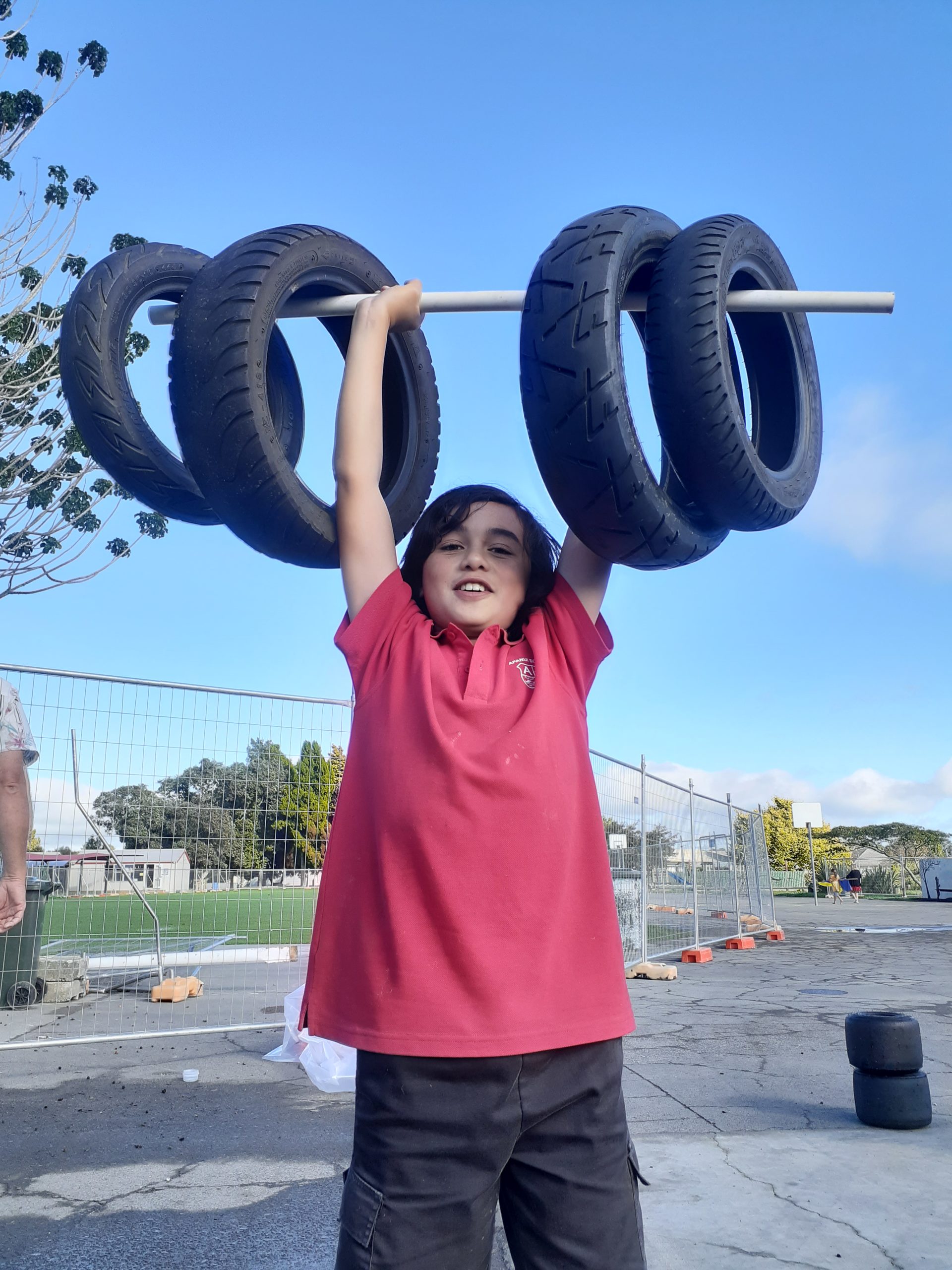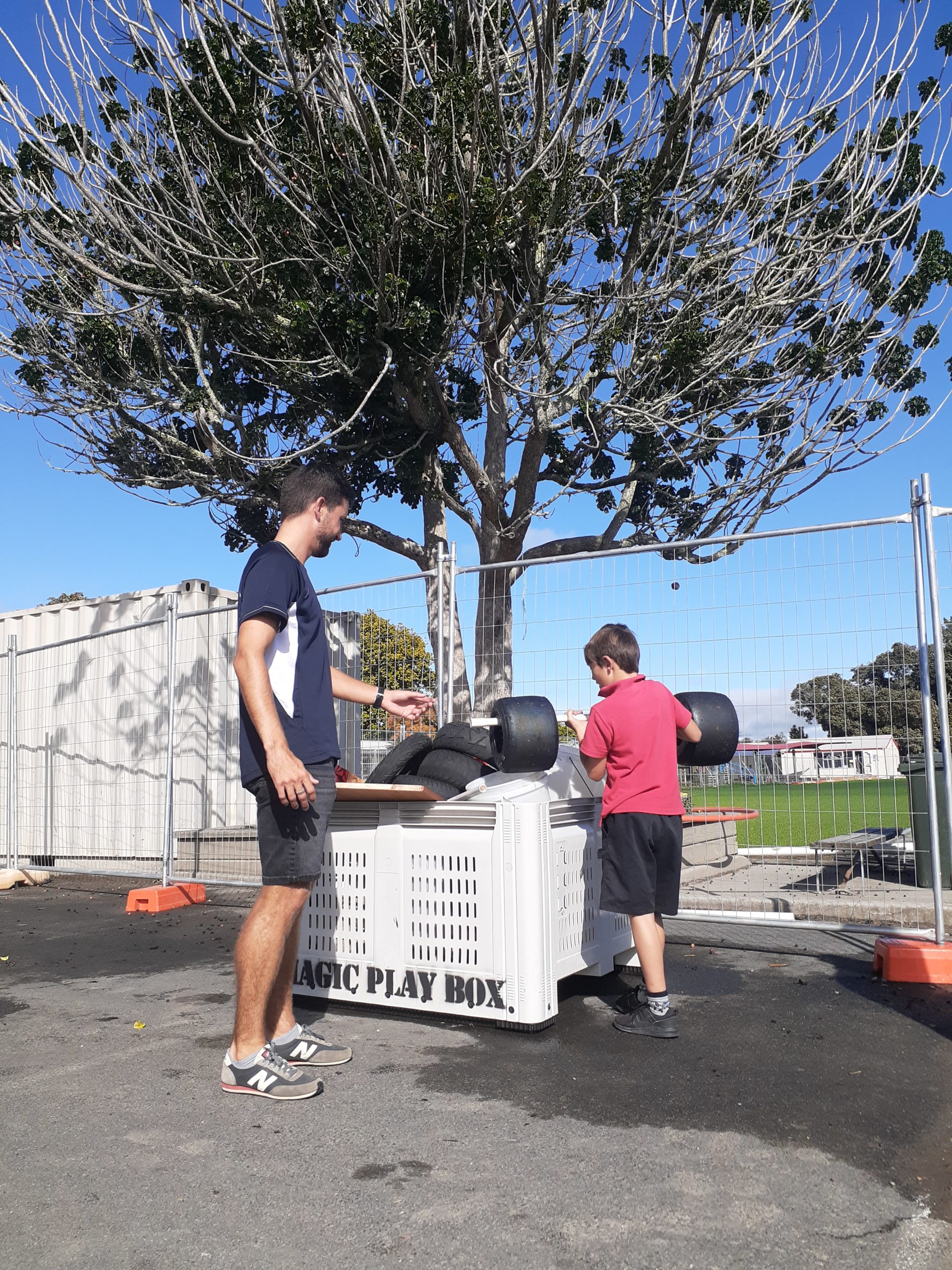Play and wellbeing
Through our discussions with schools across New Zealand, we’ve learned that many have a focus on how to use loose parts play as pedagogy or using what they observe with their students’ play to align with the curriculum or lessons to develop key competencies.
Some schools though, on top of understanding the value of independent play in a child’s learning, also see how play is important to their students’ holistic wellbeing.
I asked Mike Tipene, Pou Whakahaere at He Oranga Poutama, to put into Te Reo Māori the concept of independent play bringing out the child’s true self, their curiosity, their creativity and need to connect to self, others and environment. This is the result;
“Mā te tākaro kia rere te wairua.”
“Play lets the spirit soar”
This goes along with one of the Magic Play Box’s by-lines, “The magic is not in the box; it comes from within the child.” So we see that independent play (no adult involvement) lets the “spirit soar”.
In my first blog article, I mention that Dr Peter Gray 1 links the decline in play to the increase in children’s mental health issues. He states “One thing we know about anxiety and depression is that they correlate significantly with people’s sense of control or lack of control over their own lives.”
What we know from research, and with our experience with the Magic Play Box, is that true independent play promotes critical thinking, cooperation (getting on with others), creativity, and communication skills and therefore a greater sense of being in control of one’s life.
Dr Stuart Brown 2 mentions “Play seems to be so important to our development and survival that the impulse to play has become a biological drive.” He also adds, “Studies show that if they are well fed, safe, and rested, all mammals will play spontaneously.”
If we minimise spontaneous independent play through adult controlled structured activity there is a greater chance of a sense of lack of control over one’s life and therefore an increased chance of anxiety and depression.
When we mention wellbeing, it is also the adults that benefit from play or in this case watching children play independently. Dr Hinemoa Elder 3, in mentioning the whakataukī (Māori proverb) “Ko te mauri, he mea huna ki te moana. The life force is hidden in the sea”, she says “it reminds me of those things we feel intuitively but often ignore.” What we have seen are adults ignoring their inner-child or failing to remember the feeling of their own childhood play experiences.


Greg McKeown 4, in his book, about regaining control of our choices so we can make the highest possible contribution towards the things that really matter, states in a chapter titled PLAY – Embrace the wisdom of Your Inner Child that, “Play doesn’t just help us to explore what is essential. It is essential in and of itself.” So we know that when we gain joy from something or we take happiness from doing or witnessing something, there is a positive effect on our physical and mental wellbeing.
We capture this concept in our second by-line “Turning junk to joy.” Our experience with the Magic Play Box is that there are wellbeing benefits for teachers going by the comments we receive back. Here are some examples of teacher comments;
“Now I know why it is called the Magic Play Box. It is just awesome.”
– Amabel Fernandes, Teacher, New Windsor School
“My students enjoying the Magic Play Box. I love how they even play in the empty box. Lots of team work and amazing ideas. Look at their faces how much Joy they get from this box of junk.”
-Julie Craven, Teacher, Henderson North School
“It was so awesome! The kids were really creative. I was sooooo impressed at how they came up with games using the parts.”
-Teacher, Kelston Primary School
One of our local West Auckland Teachers, Tom Hooker 5, in his Masters’ Thesis interviewed another teacher who recounted a story in which happiness emerged with lightness from watching children play with a Magic Play Box.
In the interview with Tom, the teacher said, “So they’re playing with all this stuff and it’s meant to be this really free play. The kids were having such a good time. I didn’t have to do anything – they just played so nicely for 40 mins, they needed a lot less teacher intervention playing that way than when they play on the playground. They were able to share and take turns. There were lots of kids playing with different people that they wouldn’t usually play with – like lots of girls and boys playing together which doesn’t happen so much on the playground. It was so simple but they were just ecstatically happy so it was just super fun to watch them.”
Tom adds the teacher “is quick to recognise the simple pleasure of the experience. As she recalls the creativity with which her class played, it is easy to understand how their happiness must have been infectious.”
So let the spirit soar, the spontaneity in play happen, find the joy and happiness, and feel the benefits in everyone’s wellbeing.
By Greg Gurau
References:
- Gray, P 2015, Free to Learn: Why Unleashing the Instinct to Play Will Make Our Children Happier, More Self-Reliant, and Better Students for Life, Basic Books, New York.
- Brown, S 2010, Play; how it shapes the brain, opens the imagination, and invigorates the soul, Scribe, Melbourne.
- Elder, H 2020, Māori Wisdom for a Contented Life Lived in Harmony With Our Planet, Penguin Random House, Auckland.
- McKeown, G 2021, essentialism: The Disciplined Pursuit of Less, Virgin Books, London.
- Hooker, T 2020, ‘Stories of happiness, emotional goals and identity in 21ˢᵗ century teachers’, Master of Educational Leadership Thesis, University of Waikato, Hamilton

